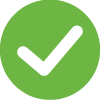You are viewing an old version of this page. View the current version.
Compare with Current View Page History
Version 1 Next »
https://help.myob.com/wiki/x/JimEAQ
How satisfied are you with our online help?*
Just these help pages, not phone support or the product itself
Why did you give this rating?
Anything else you want to tell us about the help?
Configuring the Return Print Setup
Using the Return Print Setup option you can configure different printers and paper trays for the standard documents within the practice which require printing.
For example you may want to customise your printing to print:
-
the main form on plain paper in portrait orientation
-
a letterhead on letterhead paper
-
an invoice on special stationery
-
the depreciation and capital gains schedules in landscape orientation
-
documents to a local printer for a particular user.
To configure the return print setup
-
Open an existing return or create a new return.
-
Select Utilities > Practice default options > Return print setup.
-
Click
 to select the page setup for each for form and document.
to select the page setup for each for form and document. -
Select the page setup you want to apply and click Select.
-
Click OK.
See Opening an existing return or Creating a return.
The Print Setup window opens. The window lists the types of forms and documents that you may want to print from MYOB AO.
On Print Setup tab select the Page Setup type for those forms and documents you want to print. On the MYOB PDF Manager tab select the Page Setup type for those forms and documents you want to save as PDFs.
The Select Page Setup window opens.
To create a custom page setup
-
Access Tax by opening an existing return.
-
Select Utilities > Practice default options > Return print setup.
-
Click
 next to the form or document for which you want to create a custom page setup.
next to the form or document for which you want to create a custom page setup. -
Click New.
-
Enter a descriptive name for the page setup in to the Name text field.
-
Check Apply a default printer for this page setup to set a custom printer for the page setup. All forms and documents which use this page setup will be sent to the selected printer. You can configure:
-
Printer — select the appropriate printer on the Printer drop-down.
-
Paper — if custom paper is required for the page setup, select the paper type on the Paper drop-down.
-
First page — you may want to print the first page from a printer tray which contains different paper such as a letterhead. Select the printer tray on the First page drop-down.
-
Others — select the printer tray you want to use for the rest of the document on the Others drop-down.
-
On the Page layout tab you can configure:
-
Margins — margins are the distance from each edge of the printed page. This usually excludes non-printable areas applicable to some laser printers. The standard margins (top, bottom, left, right) is 10mm.
-
Page scaling — the scaling factor represents how the sizes of characters in a printed report are altered in relation to the physical page size.
-
No. of copies — indicates the number of copies for each printed page. Enter the required number of pages.
-
Orientation — these radio buttons, Auto, Portrait or Landscape, set the direction of printing on the page.
-
Mode — the default mode of printing is Windows native. Windows native ensures maximum functionality and compatibility between applications and printers.
-
Base font — this is the default font used for printing. Click
 to select from the list of available fonts.
to select from the list of available fonts. -
Size — this is the point size of the base font. You can enter the point size or select the font size from the Size drop-down.
-
Style — the Style of the base font. Select from the available styles on the Style drop-down.
-
Column underlines — select the radio button to determine whether columns have single thick or double underlining.
-
The Font Styles tab enables you to associate True Type and built in printer fonts with font list entries. Each font list is specific to a nominated page setup. You can store up to fifteen different font and size combinations for each page setup.
See Opening an existing return.
The Print Setup window opens.
The Select Page Setup window opens.
The New page setup window opens.
The formulae for calculating the scaling factor are: Font height in points equals the scaling factor divided by 10 and Column spacing in number per inch equals 120 divided by the font height.
A scaling factor of 100% produces characters 10 points in height and the report’s columns are spaced at 12 per inch. A greater scaling factor produces characters greater in height with report columns further apart. As such lines may need to wrap and to compensate the report design may need to change. The scaling factor also determines the effective number of lines per page. This is based upon the standard spacing for the font point size selected by the scaling factor.
Selecting the Windows native mode of printing attempts to replicate the same output irrespective of printer capability.
The DOS emulate radio button attempts to duplicate the way a report is produced in DOS. Some of the fields in the Page layout window that change to match DOS settings are paper type, pitch and lines per inch fields.
To insert a font style:
-
Click the number in on the ID column in the first blank row and select Insert from the pop-out menu.
-
Enter a description for the style in the Title column.
-
Click in the Font name column and then click
 .
. -
Select the required font and click OK.
-
Click in the Size column and then select the required size from the drop-down.
-
Click OK to save the new page setup.
To edit an existing page setup
-
Access Tax by opening an existing return.
-
Select Utilities > Practice default options > Return print setup.
-
Click
 next to the form or document for which you want to edit the custom page setup.
next to the form or document for which you want to edit the custom page setup. -
Select the custom page setup you want to edit and click Properties.
-
Edit the properties of the page setup as required.
-
Click OK to save the changes.
See Opening an existing return.
The Print Setup window opens.
The Select Page Setup window opens.
The Page setup properties window opens.

 Yes
Yes
 No
No
 Thanks for your feedback.
Thanks for your feedback.